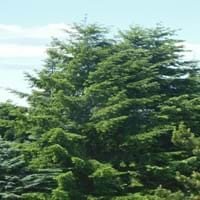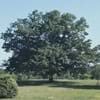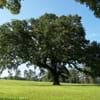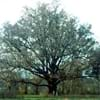Life Span
Perennial
Perennial
Origin
Western United States, California, Canada, China
Asia, Europe, North America
Types
Balsam Fir, Cannan Fir, Fraser Fir, Grand Fir
Black Ash, Blue Ash, California Ash, Carolina Ash, European Ash
Number of Varieties
Not Available
Habitat
Moist Soils, Rocky areas
Forest edges, Hillside, Woods
USDA Hardiness Zone
4-7
3-9
Sunset Zone
A2, A3, 1a, 1b, 2a, 2b, 3a, 3b, 4, 5, 6, 7, 9, 10, 14, 15, 16, 17
9, 12, 13, 14, 15, 16, 17, 18, 19, 20, 21, 22, 23, 24
Habit
Upright/Erect
Oval or Rounded
Flower Color
Not Available
White
Flower Color Modifier
Bicolor
Not Available
Fruit Color
Sandy Brown
Not Available
Leaf Color in Spring
Dark Green
Dark Green
Leaf Color in Summer
Dark Green
Dark Green
Leaf Color in Fall
Dark Green
Dark Green
Leaf Color in Winter
Dark Green
Dark Green
Leaf Shape
Needle like
Oblovate
Plant Season
Spring, Summer, Fall, Winter
All year
Sunlight
Full Sun
Full Sun, Part sun
Type of Soil
Clay, Loam
Loamy, Sandy
The pH of Soil
Acidic, Neutral
Acidic
Soil Drainage
Well drained
Well drained
Bloom Time
Not Available
Late Spring, Spring
Tolerances
Shade areas
Drought, Pollution, Soil Compaction
Where to Plant?
Ground
Ground
How to Plant?
Seedlings, Stem Planting, Transplanting
Grafting, Seedlings, Stem Planting, Transplanting
Plant Maintenance
Low
Medium
Watering Requirements
Keep the ground moist but not water-logged, Requires consistently moist soil
Does not require lot of watering, Medium, Prefer drip-irrigation instead of Over-head watering
In Summer
Lots of watering
Lots of watering
In Spring
Moderate
Moderate
In Winter
Average Water
Average Water
Soil pH
Acidic, Neutral
Acidic
Soil Type
Clay, Loam
Loamy, Sandy
Soil Drainage Capacity
Well drained
Well drained
Sun Exposure
Full Sun
Full Sun, Part sun
Pruning
Not Available
Prune in winter, Prune prior to new growth
Fertilizers
All-Purpose Liquid Fertilizer, fertilize every 2-3 weeks while growing
All-Purpose Liquid Fertilizer
Pests and Diseases
Beetles, Borers, Red blotch
Bark splits, Crown gall, Epicormic Sprouting, Woodpecker feeding
Plant Tolerance
Drought
Drought
Flowers
Not Available
Yes
Flower Petal Number
Not Available
Single
Foliage Texture
Fine
Medium
Foliage Sheen
Matte
Glossy
Allergy
Skin rash
Not Available
Aesthetic Uses
Beautification, Landscape Designing, Showy Purposes, Used as Christmas tree
Not Available
Beauty Benefits
Not Available
Not Available
Environmental Uses
Air purification, Nesting sites for birds
Air purification
Medicinal Uses
Burns, Cough, Sore throat, Stomach pain, Wounds
Fever, Liver problems
Part of Plant Used
Whole plant
Leaves, Stem
Other Uses
Decoration Purposes, Economic Purpose, Oil is used for aromatherapy, Showy Purposes, Used As Food, Used for its medicinal properties, Used in biomass, Used in paper industry, Wood is used for making furniture, Wood is used for ship building, Wood is used in construction, Wood log is used in making fences
Used as Ornamental plant
Used As Indoor Plant
Yes
No
Used As Outdoor Plant
Yes
Yes
Garden Design
Alpine, Feature Plant, Foundation, Screening / Wind Break, Shade Trees
Shady Tree, Showy Tree
Botanical Name
PSEUDOTSUGA menziesii
Fraxinus
Common Name
Douglas Fir
Ash Tree
In Hindi
डगलस फ़िर
राख पेड़
In German
Douglasfichte
Esche
In French
le sapin de Douglas
Frêne
In Spanish
abeto Douglas
Fresno
In Greek
έλατο Douglas
δέντρο Ash
In Portuguese
Douglas Fir
Freixo
In Polish
daglezji
Jesion
In Latin
Douglas abies
Fraxinum
Phylum
Tracheophyta
Anthophyta
Class
Pinopsida
Magnoliopsida
Genus
Pseudotsuga
Fraxinus
Clade
Not Available
Angiosperms, Asterids, Eudicots
Tribe
Not Available
Oleeae
Subfamily
Not Available
Not Available
Number of Species
Not Available
Importance of Douglas Fir and Ash Tree
Want to have the most appropriate plant for your garden? You might want to know the importance of Douglas Fir and Ash Tree. Basically, these two plants vary in many aspects. Compare Douglas Fir and Ash Tree as they differ in many characteristics such as their life, care, benefits, facts, etc. Every gardener must at least have the slightest clue about the plants he wants to plant in his garden. Compare their benefits, which differ in many ways like facts and uses. The medicinal use of Douglas Fir is Burns, Cough, Sore throat, Stomach pain and Wounds whereas of Ash Tree is Fever and Liver problems. Douglas Fir has beauty benefits as follows: Not Available while Ash Tree has beauty benefits as follows: Not Available.
Compare Facts of Douglas Fir vs Ash Tree
How to choose the best garden plant for your garden depending upon its facts? Here garden plant comparison will help you to solve this query. Compare the facts of Douglas Fir vs Ash Tree and know which one to choose. As garden plants have benefits and other uses, allergy is also a major drawback of plants for some people. Allergic reactions of Douglas Fir are Skin rash whereas of Ash Tree have Not Available respectively. Having a fruit bearing plant in your garden can be a plus point of your garden. Douglas Fir has no showy fruits and Ash Tree has no showy fruits. Also Douglas Fir is not flowering and Ash Tree is flowering. You can compare Douglas Fir and Ash Tree facts and facts of other plants too.





